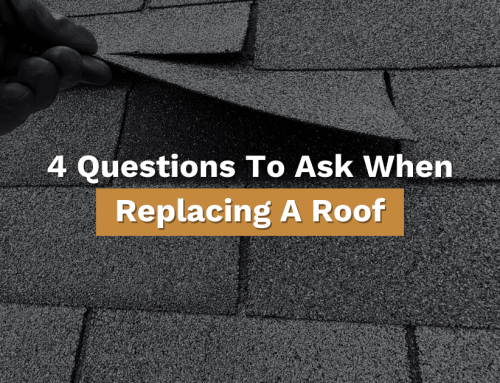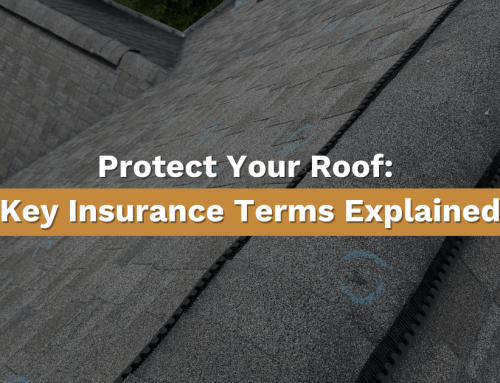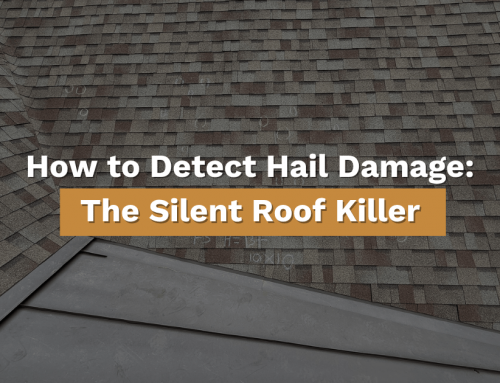You see your roof every day. You see your neighbor’s roof every day. You see dozens, maybe even hundreds of roofs every day.
But what you don’t know just by looking at them is that the typical roofing system is incredibly complex, employs some of the best cutting-edge technology in the construction industry, and hides a bevy of “trade secrets.”
We’re pulling back the curtain (or shingles, in this case) and revealing 10 roofing facts that might surprise you.
1. Where you live dictates what style of roof you should get.
It’s a roofing fact: some roof types just work better in certain regions and climates. Gable roofs, or roofs formed with two triangles at a 90-degree angle, work best in colder, snowier climates or when homeowners want to build attics or have vaulted ceilings.
Hipped roofs, which have four slopes of equal length on all four sides that meet at the top to form a ridge, are more wind resistant than gable roofs and might work best in windy areas.
Water tends to pool more easily on a flat roof, which means this type of roofing system might be best in a drier, less rainy climate.
2. Flat roofs are not flat.
Don’t be fooled by the name. Flat roofs are not entirely flat. They actually have a slight slope of at least ¼ inch per foot.
3. A roof is a lot more than shingles and wood.

A good roof system has no fewer than seven necessary components. There’s the roof decking, which has to support all the weight of the roofing system. Next comes the ice or water barrier to help prevent damage if ice damming occurs. A roof also needs a waterproof or water-resistant underlayment that will protect the deck directly from moisture creeping in. Then there’s the metal flashing, which ensures the water runs off the edges, and a drip edge, which has a similar function. Finally, a roof has to have shingles. And don’t forget the ventilation system–the soffits, eaves and vents which allow air to circulate.
4. It’s not okay to cover an existing roof.
While it may seem like an inexpensive, quick fix to a roofing problem, double-layered roofs can cover up big roofing issues that need to be addressed. In addition, a double-layered roof adds weight and just hides the corroding material, allowing the problem to get worse. If previous roofing materials were installed over the top of your existing roof, you should replace the entire roof as soon as possible.
5. You can’t DIY a roof.
Yes, it seems to run counter to what all the DIY programs tell you. The true roofing fact is, a roof is actually a complex system of layers that require proper installation from skilled professionals with the right training and tools to ensure it all works together correctly. Going the DIY route can result in damage to your attic, walls, wood frame, and even electrical systems.
6. Roofs breathe.

As funny as it may sound, a roof needs air. Roof ventilation, ie: the flow of air on the underside of a roof deck, is one of the most critical aspects of the whole roof system. Roof ventilation allows warm, moist air to escape and cooler, drier air to come into the attic. Without ventilation, condensation is going to build up in your attic, which can damage walls, wood and insulation.
7. A roof can be good for the environment.
Environmentally friendly or “cool roofs” reflect infrared and ultraviolet rays from the sun away from the building and have a higher thermal emittance, or ability to efficiently emit radiation. According to the EPA, cool roofs not only help homeowners conserve energy, but they reduce air pollution and greenhouse gas emissions as well by mitigating the heat radiated into the atmosphere.
8. Professional roofing cleaning companies are a thing.
It’s a roofing fact that it’s important to keep your roof clean and clear of moss, algae and fungus/lichen, but did you know there are professionals who specialize in keeping roofs clean? They have special techniques and products to do it, including equipment that doesn’t harm shingles and biodegradable cleaning solutions that are less harmful to plants and the environment. They even have a trade association, the Roof Cleaning Institute of America.
9. A faulty roof can break a home sale.
A new roof can be a major selling point when you go to sell your home. Conversely, a roof with leaks, missing or damaged shingles, or other visible signs of disrepair can send a potential buyer running. The last thing a new homeowner wants to do is spend money on a costly roof replacement. It’s far better to replace your roof before you sell your home.
10. My roof will last forever.
Almost, but not quite. The typical lifespan of a roof really depends on the materials and installation. A simple, 3-tab shingle roof may be warranted for 20 to 25 years. Shake style shingles can be warranted for up to 50 years.




